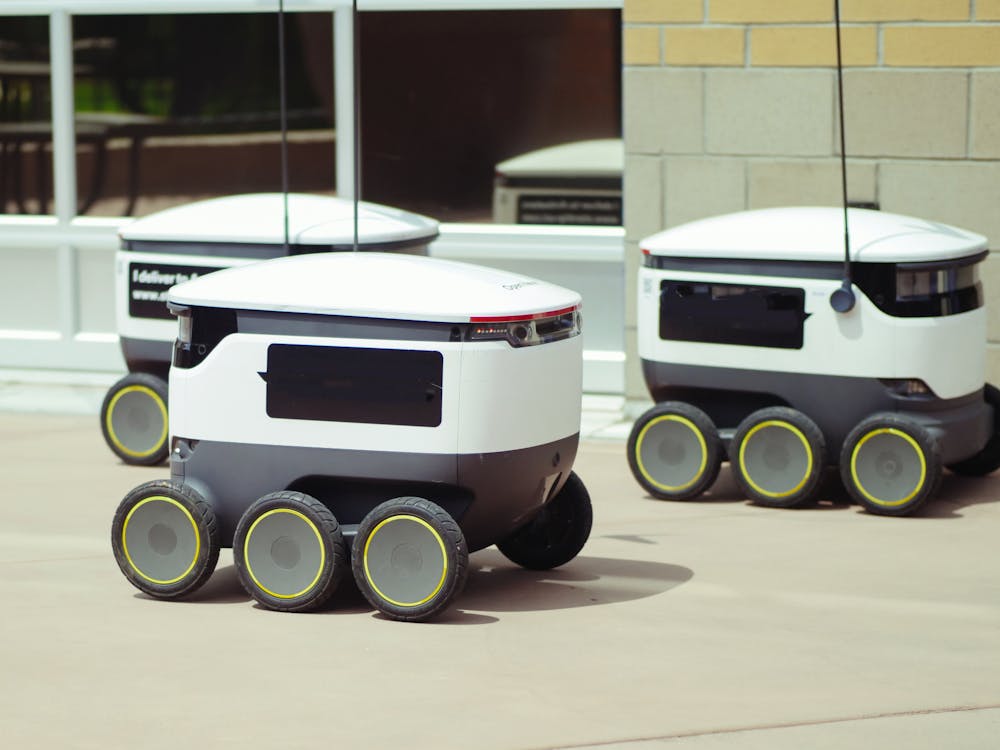Illustration of Technological Trends, photo by fauxels on Pexels
As we move into 2024 and beyond, technology is rapidly shaping the way we live, work, and connect with the world. The pace of innovation is at an all-time high, and the next couple of years promise to bring major advancements across various industries. From AI and blockchain to the rise of autonomous systems, the trends we'll explore here will help you understand what to expect as the digital landscape continues to evolve. In this article, we'll take a closer look at the top 10 technology trends expected to make significant impacts from 2024 to 2025.
1. Artificial Intelligence (AI) and Machine Learning (ML) Growth
AI and ML are more than just buzzwords—they are redefining industries and reshaping how businesses operate. The growth of AI is evident as companies increasingly adopt machine learning algorithms for predictive analytics, customer support, automation, and data-driven decision-making. Sophisticated AI-powered tools like chatbots, virtual assistants, and recommendation engines are becoming more effective at personalizing experiences. By 2025, AI is expected to have penetrated over 80% of businesses globally, with the market size expected to show an annual growth rate (CAGR 2024-2030) of 28.46%, leading to smarter, more efficient operations across sectors.
In practical terms, this means more intelligent automation in manufacturing, healthcare diagnostics enhanced by ML algorithms, and improved customer experiences across e-commerce and finance. With AI's growth, ethical considerations and regulation will also rise, as AI governance becomes critical in ensuring responsible usage.
2. Decentralized Finance (DeFi): Beyond Cryptocurrency
While blockchain technology became widely known due to its role in cryptocurrencies like Bitcoin and Ethereum, its potential goes far beyond digital currencies. The technology offers decentralized and secure data recording, which has been increasingly adopted in supply chain management, digital identity verification, healthcare records, and government processes.
The financial sector remains a strong focus, with decentralized finance (DeFi) platforms using blockchain for secure lending, borrowing, and trading of digital assets. Additionally, non-fungible tokens (NFTs) have sparked interest in digital ownership across art, music, and virtual real estate. As cited by Business Insider, the blockchain market value is expected to surpass $39 billion by 2025, with significant growth in real-world applications.
3. Quantum Computing Breakthroughs

Illustration of Quantum Computing, photo by Christina Morillo on Pexels
Quantum computing is gradually shifting from a theoretical concept to a practical reality. Unlike classical computers that use bits as binary 0s and 1s, quantum computers leverage qubits, which can exist in multiple states simultaneously. This feature allows them to solve complex problems at unprecedented speeds, enabling breakthroughs in cryptography, artificial intelligence, and large-scale simulations.
Major technology players like IBM, Google, and Microsoft are investing billions in developing practical quantum computing applications. While the technology is still in its infancy, its progress will lay the groundwork for transformative breakthroughs by 2025, particularly in areas where traditional computing hits limitations.
4. Extended Reality (XR) and the Metaverse Boom
Extended Reality (XR) encompasses Augmented Reality (AR), Virtual Reality (VR), and Mixed Reality (MR), all of which create immersive experiences by blending the digital and physical worlds. With the expansion of the metaverse—a virtual universe where users interact as avatars—XR is shaping how we socialize, work, and play. The rise of gaming, virtual events, digital workplaces, and virtual shopping experiences are driving its growth.
According to Statista, the global XR market is expected to grow to around $209 billion by 2025. The metaverse, propelled by companies like Meta (formerly Facebook), Microsoft, and other tech giants, will likely change how we interact with digital content, blurring the line between virtual and physical realities.
5. The Rollout of 5G and the Dawn of 6G
The global rollout of 5G has already begun, offering faster data speeds, lower latency, and improved connectivity over previous generations. This enables real-time applications like autonomous vehicles, IoT devices, and remote healthcare. By 2025, most countries will have widespread 5G coverage, enabling better connectivity for everything from smart homes to smart cities.
Meanwhile, early discussions around 6G are also emerging, promising data speeds up to 100 times faster than 5G. Though still in the early research phase, 6G aims to revolutionize industries that rely on instant data transmission. ABI Research projects that the global 5G infrastructure market will exceed $20 billion by 2025, and 6G trials may be underway.
6. Edge Computing and the IoT Explosion
The Internet of Things (IoT) is bringing more devices online, from wearables and smart appliances to industrial machinery. Edge computing processes data closer to its source, reducing latency and improving real-time data handling. This is particularly important in applications like autonomous vehicles, industrial automation, and healthcare monitoring, where instant data processing is critical.
By 2025, the edge computing industry is forecasted to hit $15 billion, supporting the explosive growth of connected devices and reducing strain on cloud networks. This localized data processing is expected to enhance the performance and reliability of smart devices in homes, cities, and industries.
7. Heightened Cybersecurity Focus

Illustration of Cybersecurity, photo by Pixabay on Pexels
As technology advances, so do the threats posed by cyberattacks. The increase in remote work, cloud computing, and digital transactions has put cybersecurity at the forefront of business priorities. Advanced threats like ransomware, phishing attacks, and data breaches necessitate robust cybersecurity solutions, including AI-based threat detection, zero-trust architectures, and biometric authentication.
According to Cybersecurity Ventures, the cybersecurity industry is expected to see an annual cost of over $10.5 trillion in damages by 2025. Enhanced security practices, such as blockchain-based identity verification and encryption technologies, will become crucial to protect sensitive data.
8. Sustainable Tech and Green Computing
Sustainable technology is emerging as companies seek to reduce their environmental footprint. Green tech initiatives are driving the use of energy-efficient data centers, electric vehicles, and renewable energy sources. Technologies like AI and IoT are also used to optimize energy consumption in smart grids and buildings.
The focus on sustainability has expanded beyond the environmental benefits to a business imperative, enhancing brand reputation and long-term profitability. As per the International Energy Agency, renewable energy is expected to account for nearly 95% of the increase in global power capacity from now until 2025, emphasizing the significance of green tech.
9. Human Augmentation and Wearable Tech Evolution
Wearable technology and human augmentation are moving beyond basic fitness tracking. Innovations in smartwatches, AR glasses, and health-focused wearables are making it easier to monitor personal health, enhance productivity, and improve lifestyle experiences. Future wearable devices will enable advanced diagnostics, augmented experiences, and seamless integration with other smart devices.
According to Statista, the global wearable market is projected to exceed $90 billion by 2025. These devices will become essential parts of daily life, improving personal health, work productivity, and augmented entertainment experiences.
10. Autonomous Systems and Robotics Advancement

Illustration of Robotics and Autonomous Systems, photo by Kindel Media on Pexels
Autonomous systems and robotics are transforming the manufacturing, agriculture, healthcare, and logistics industries. With AI at their core, robots can now perform tasks that were previously the domain of humans. From autonomous vehicles and drone deliveries to robotic surgical assistants and warehousing robots, the deployment of autonomous systems will continue to grow.
McKinsey predicts that advancements in AI and robotics will automate around 30% of tasks in certain sectors by 2025. As technology improves, we will see more intelligent robots capable of handling more complex tasks, and supporting human labor in production lines, agriculture, and medical facilities.
Conclusion
The technology trends forecasted for 2024-2025 are set to reshape industries, redefine how we work and live, and drive innovation across the globe. From AI and blockchain to edge computing and sustainable tech, these advancements will not only enhance convenience and efficiency but also bring challenges regarding cybersecurity, privacy, and ethical considerations. Staying informed and adapting to these changes is key to thriving in a rapidly evolving technological world. These trends highlight an interconnected, intelligent, and continuously progressing future, offering exciting opportunities for businesses and consumers.




